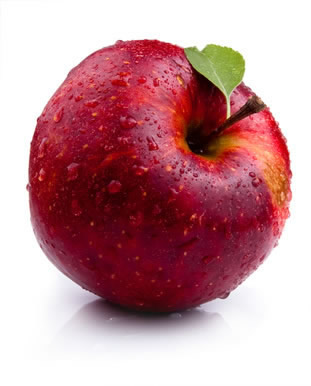Branched chain amino acids are a group of essential amino acids composed of 3 essential amino acids. The names of BCAA are leucine, isoleucine and valine. BCAA are unmatched in that they are not metabolized by the liver. These amino acids are substantial to athletes and active people because they are stored in very elevated concentrations within muscle tissue. Leucine plays role in insulin secretion, healing the skin, muscle tissues and bones. Isoleucine is known to aid in regulation of blood sugar levels. Valine facilitates muscle metabolism and repairing body tissues. Additionally aids in maintaining balance of nitrogen in the body. The branched chain amino acids, leucine, isoleucine, and valine comprise approximately 35 % of the amino acids making up your skeletal muscle.
BCAA Benefits
Branched chain amino acids play a important role in protein metabolism and igniting muscle protein synthesis. They are taken in supplementation form by athletes and bodybuilders to increase muscle growth and recovery. Some researches has showed that branched chain amino acids may moderate the progression of central nervous system fatigue during exercise, supporting mental performance. Other than that, BCAA’s are used to treat amyotrophic lateral sclerosis, brain conditions due to liver disease, tardive dyskinesia, McArdle’s disease (a genetic disease), and anorexia in cancer patients. A double-blind study examined branched chain amino acids on 28 patient with cancer who had lost their appetites due to either the disease itself or its therapy. Appetite healed in 55 percent of those taking BCAAs compared to just 16 percent of those who took placebo. Medical practitioners give BCAA intravenously for sudden brain swelling due to liver illness and when the body has been under excessive stress. Also, branched chain amino acids may aid in recovery after surgery.

Branched chain amino acids would be considered one of the most important sports supplements to bodybuilders. Without enough levels of BCAA, muscle cells won’t recover or grow. BCAAs help reduceexercise-induced muscle damage, enhance muscle recovery, and regulate protein synthesis. Several findings, shows that BCAAs supplement before and after exercise has positive effects for decreasing exercise-induced muscle damage and promoting muscle protein synthesis. In a 2006 study concluded that the intake of BCAA may promote an anabolic hormone profile while also decreasing the probability of training-induced muscle damage. Consuming a BCAA supplement post workout will help your body heal much quicker. Some researches have shown that BCAA’s effectiveness as anabolic agents allowing the body to burn fat instead of precious muscle mass. According to a research reported in the Journal of Nutrition, branched chain amino acids were shown to speed up muscle improvement and reduce delayed onset muscle soreness. A 2009 study in the Journal of Nutritional Science and Vitaminology displayed an enhance in endurance exercise capacity following BCAA’s.
Branched chain amino acids may play a function in athletic support by promoting muscle nitrogen, enhancing glutamine and alanine production, decreasing lactate production and boosting energy while attenuating protein breakdown. Researches have shown that branched chain amino acids supplement can enhance nitrogen retention, which may minimize the loss of lean muscle tissue during dieting an intense training. Whole essential amino acids are necessary to maintain a nitrogen balance. However when the 3 essential ones in focus, Leucine, Isoleucine and Valine, are combined together, they are used differently by the body. BCAAs act as nitrogen carriers assisting the muscles in synthesizing other amino acids necessary for building new cells and tissues.
BCAA and Brain
Branched-chain amino acids influence brain function by modifying large, LNAA (neutral amino acid) transport at the blood–brain barrier. Transport is shared by several LNAAs, particularly the BCAAs and the ArAAs (aromatic amino acids), and is competitive. Therefore, when plasma branched chain amino acids concentrations rise, which can occur in response to food ingestion or BCAA administration, or with the onset of specific metabolic ailment, brain BCAA concentrations rise, and aromatic amino acids (ArAAs) concentrations decline. The branched-chain amino acids leucine, isoleucine, and valine participate directly and indirectly in a variety of substantial biochemical functions in the brain. These include protein synthesis, the production of energy, the compartmentalization of glutamate, and the synthesis of the amine neurotransmitters serotonin and the catecholamines norepinephrine and dopamine which are derived from the aromatic amino acids tryptophan, tyrosine and phenyalanine. Oral BCAA have been investigated as a remedy for severe neurologic diseases. BCAAs have been given to bipolar patients during periods of mania, on the presumption that this therapy will decrease brain tyrosine (TYR) uptake and will slow catecholamine synthesis. A study performed on 25 people with mania and reported in the March 2003 issue of The British Journal of Psychiatry investigated the effects of drinking a BCAA for 7 days. Researchers concluded that the BCAA drinking people experienced a reduction of manic symptoms within 6 hours after consuming the beverage. Patients with spinocerebellar degeneration have been given BCAA supplements. In spinocerebellar patients, daily doses of up to 6 g for four weeks significantly improved symptoms and were associated with no side effects. Branched-Chain Amino Acids and Brain Function.
BCAA and Liver Disease
Oral branched chain amino acids therapy has been applied to patients with stable hepatic cirrhosis. This opinion is based on the observation that liver failure produces elevated circulating levels of the ArAAs and depressed concentrations of the BCAAs. Such changes, enhance brain concentrations of the ArAAs, probably stimulating the production of neurotransmitters and other biogenic amines that facilitate encephalopathy. In a study, patients with advanced cirrhosis ingested for 12 months 14.4 g BCAAs daily in divided doses at breakfast, lunch, and dinner. BCAA therapy decreased hospitalization, healed biochemical and pathophysiologic signs, and decreased anorexia.
BCAA Dietary Sources
Red meat and Dairy products include the maximum amounts of branched chain amino acids, although they are present in all protein-containing foods. Egg protein and whey proteine supplements are other sources of BCAAs. Approximately 25 percent of all whey protein is made up of BCAAs.
Dosage
The recommended daily dose is generally 1 g to 5 g. For hepatic encephalopathy; 240 mg/kg/day up to 25 g. The typical ratio of BCAAs is 50% leucine, 25% isoleucine, and 25% valine. Leucine is extracted from protein and is extensively processed and purified. Valine and isoleucine are produced from corn dextrose fermentation.
Side Effects
BCAA appear to be safe when used for up to 6 months. If you are taking drug for Parkinson’s disease, BCAAs may decrease its effectiveness.
 Blueberries, cherries, cranberries, pomegranate, apples, apricots, grapefruits, oranges,
Blueberries, cherries, cranberries, pomegranate, apples, apricots, grapefruits, oranges,